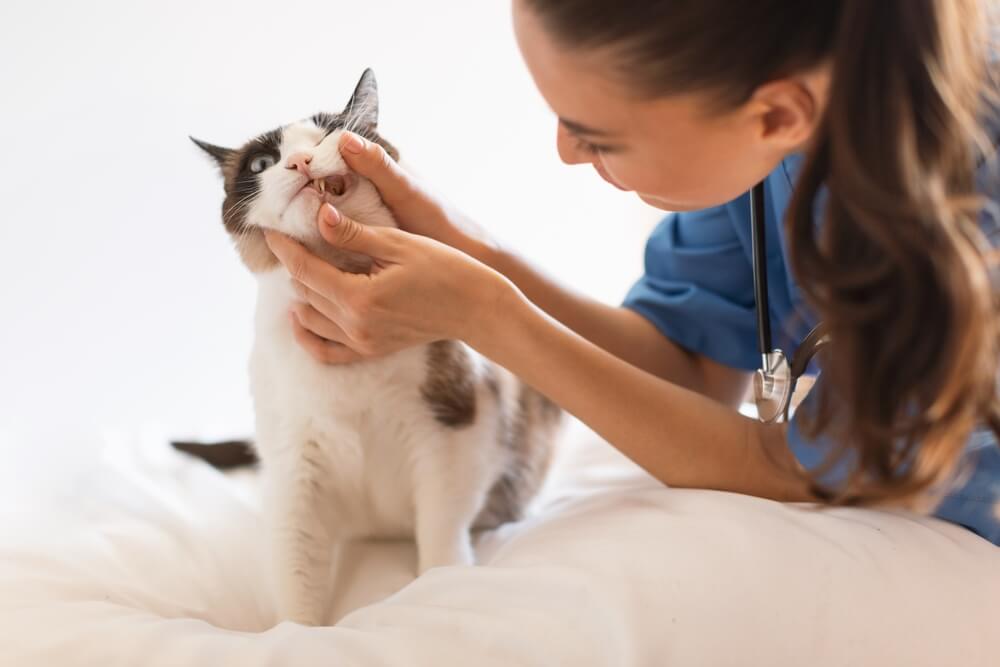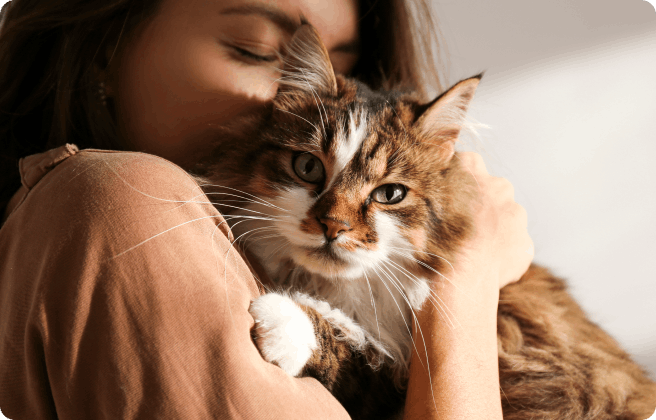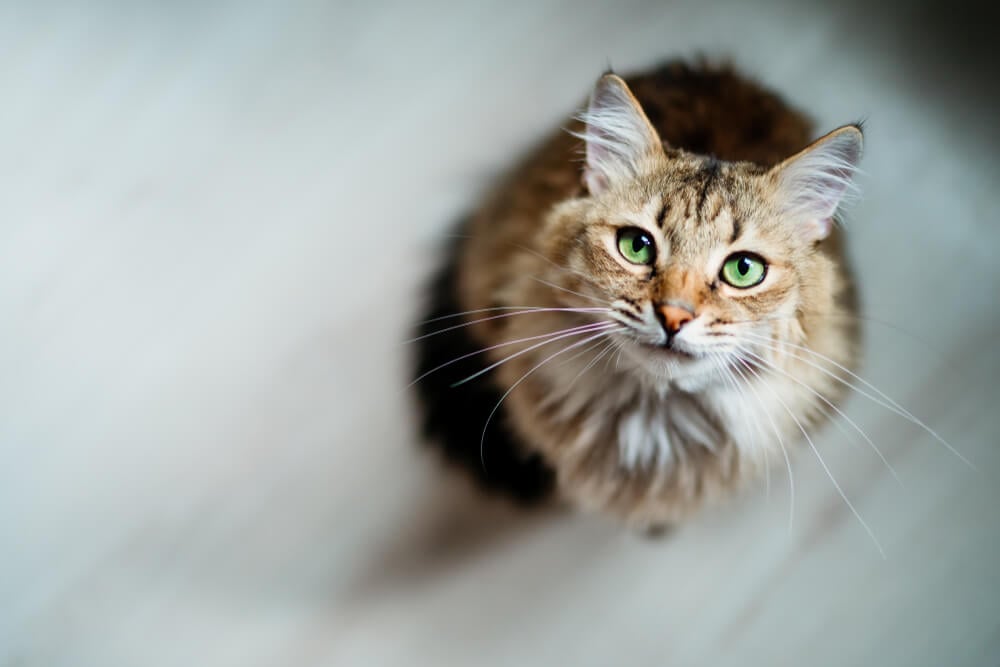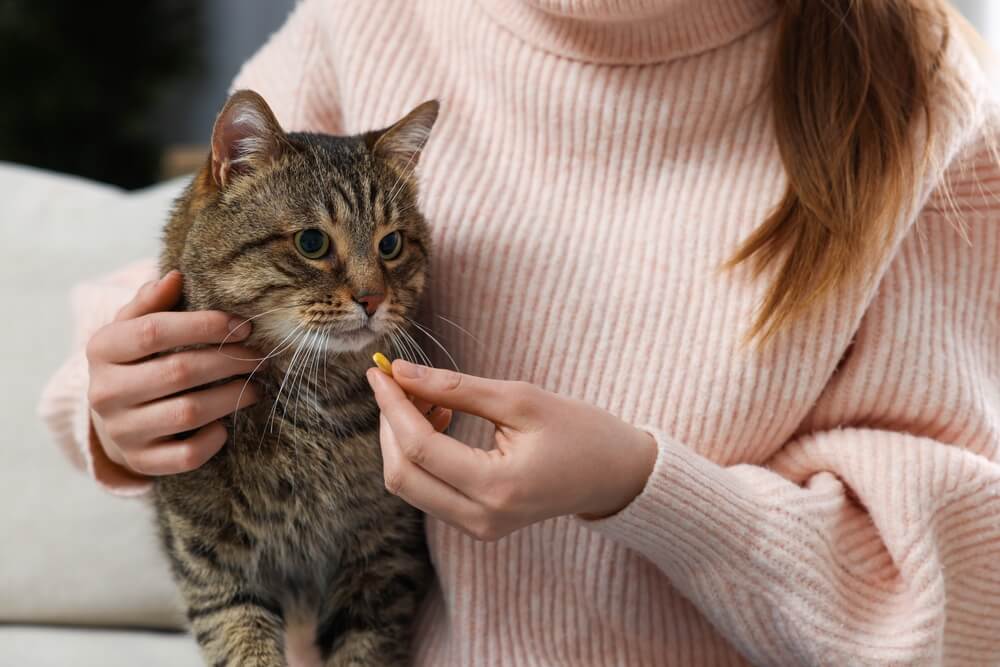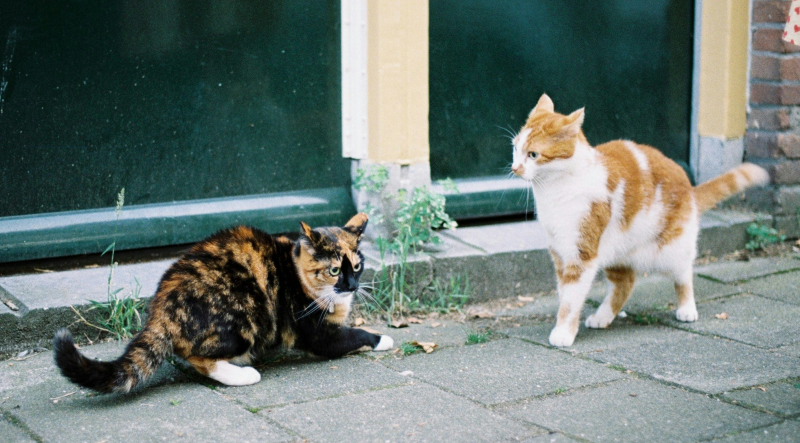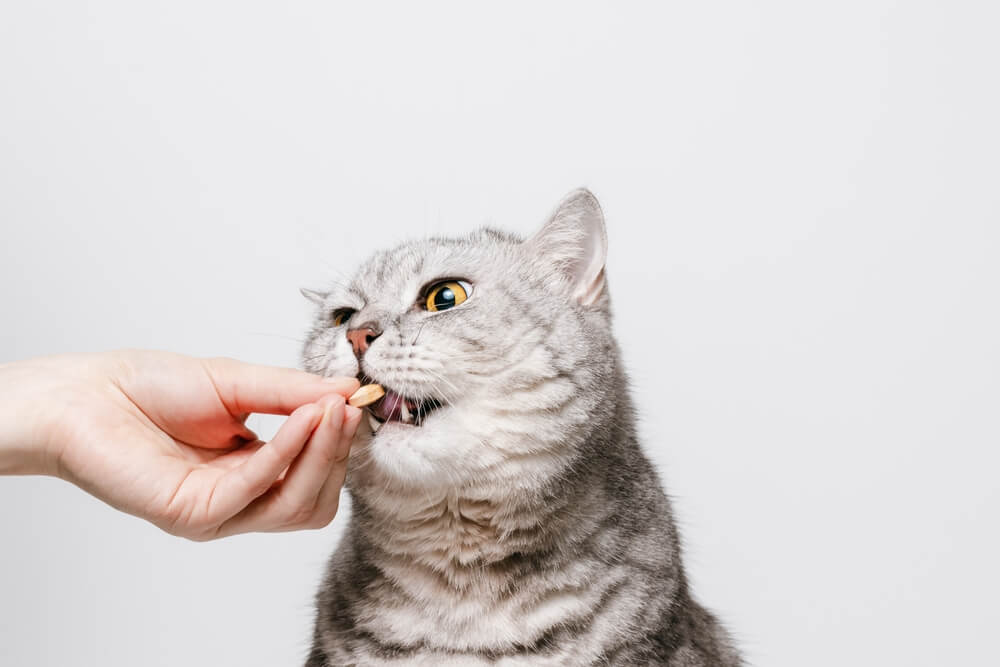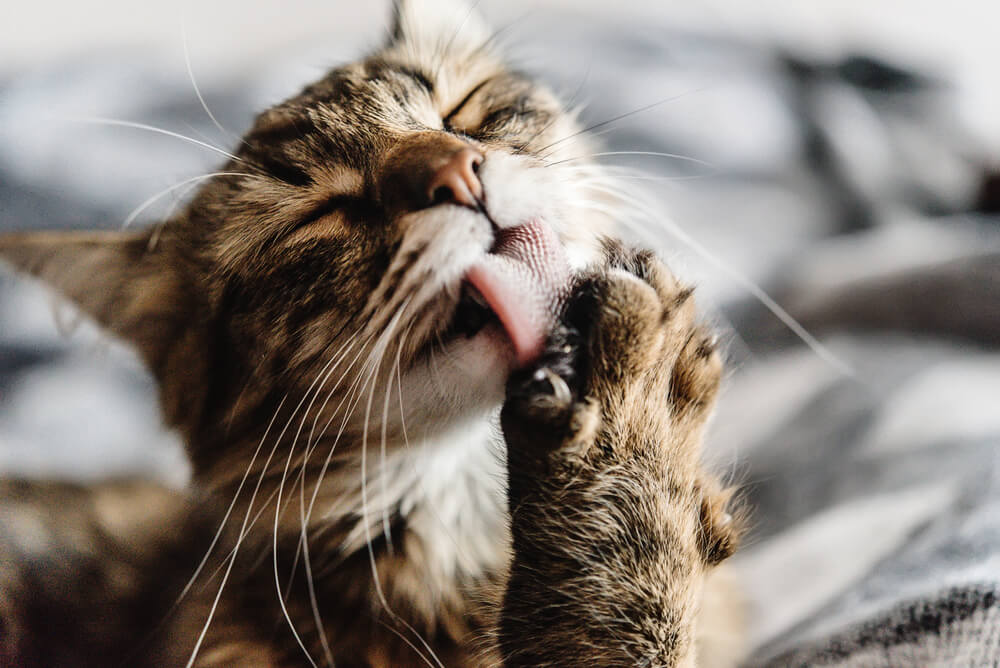
Recognizing the signs of a healthy cat is one of the most important aspects of being a cat parent. After all, a healthy cat is a happy cat.
You know your cat best and will most likely detect if something is off with them. However, cats can often be difficult to read so it’s important to recognize what a healthy cat looks like and how to tell if your cat is unhealthy.
What should healthy cats look like?
Lifted tail
When your cat holds their tail high in the air as they move about their territory, they’re expressing confidence and contentment. A tail that sticks straight up signals happiness and a willingness to be friendly.
However, keep an eye on the tip of the straight tail. A straight tail may be a sign of an aggressive cat whereas a little hook at the tip can be a friendly greeting. 1
Well-groomed
A happy, healthy cat will keep themself well-groomed. If your cat is feeling extra happy, you might notice them grooming others around them. Whether you find them attempting to groom fellow pet siblings or sometimes, their pet parent, it’s a healthy sign!
Just a heads up, if your cat is rewarding you with some kisses/licks, this is an attempt for them to groom you. Don’t be offended — it’s a sign of trust in your bond (not a hygiene issue).
Happy eyes
Cats are known for their beautiful, unique eyes, and detecting signs of healthy cat eyes can be a good indicator of their overall well-being.
Your cat’s eyes should be crystal clear and expressive. Don’t worry if their eyes suddenly become dilated, this usually means that they’re happy!
On the other hand, if you are cuddling on the sofa and their pupils become narrow slits, this is a sign of contentment, especially when accompanied by purring.
Forward facing ears
Cats have over 30 muscles in each of their outer ears which is why they are constantly twitching and moving in different directions. From listening to birds outside to zoning into your every move, cats express a lot with their ears.
A healthy, happy cat tends to have straight ears, facing forward. The alert position shows that they are attentive but not necessarily upset.
However, if your cat’s ears are pointed outwards and are held low, this may be an indication of illness or anxiety. Of course, there will be other symptoms coupled with their ear signal to indicate sickness.
Clean teeth
Clean teeth, free of chipping, plaque and tartar are a sure sign of a healthy cat. Your cat should have pink gums, free of swelling and their teeth should be devoid of discoloration, tooth loss.
You can read more about keeping your cat’s teeth clean here:
How do I know if my cat has healthy skin and coat?
A pet’s coat often reflects their overall health status. Dry, flaky skin or tangled fur may signal an underlying health issue or nutritional deficiency.
A healthy cat typically boasts a coat with vibrant color and free from dirt, debris, or excessive oil. While cats are great at grooming themselves, regular brushing can still be beneficial. If you notice your cat’s coat looking unkempt or neglected, it may be wise to schedule a check-up with your veterinarian.
How do healthy cats act?
Energy
Cats do enjoy an occasional snooze so if you notice your feline friend sleeping most of the day, this is normal. Cats do sleep around 15 hours a day so this excessive sleeping is actually a sign of good health.
However, if you notice your cat sleeping a little too much, or not enough, this may be a sign they are stressed, anxious, or sick.
Your cat should have the right balance of playfulness and sleepiness. Every cat will differ and you will know yours best.
Play
If your cat is playful, active and has healthy energy, that’s a great indicator of good overall health. Aim to provide them with several short play sessions per day to avoid boredom and keep their minds healthy.
Move comfortably
A healthy cat moves with ease and grace, showing no signs of stiffness or discomfort. Whether they’re walking, running, or jumping, their movements are fluid and effortless. If your cat is limping or showing signs of discomfort, they may have an injury, weight issues, or another health condition that needs attention.
While it’s natural that an older cat will start to slow down, the majority of cats should be nimble and enjoy moving around – especially kittens and young cats.
Communicate with you
Healthy cats are good communicators, both verbally and non-verbally. They may meow, chirp, or purr to express themselves, and they often use body language to convey their feelings and needs.
Purring contently
Happy cats purr when they are feeling content. Often, this happens while they are getting a back scratch, but sometimes, a healthy, happy cat will purr just to express their contentment.
Healthy digestive system
A healthy cat maintains regular and consistent bowel movements, indicating a well-functioning digestive system. They should not experience frequent diarrhea, constipation, or vomiting.
Signs of an unhealthy cat
We have covered some common signs of a healthy cat but here are some to look out for in an unhealthy cat:
- Sudden change in mood
- No inclination to play or appear lethargic
- Constricted or dilated pupils
- Much less or much more vocal than usual
- Rapid breathing or shortness of breath
- Noticeable weight loss or gain
- Sudden changes in appetite, drinking, or eating habits
- Vomiting or diarrhea
- Neglecting grooming or over-grooming
- Hiding
- Improper use of litter box
- Hair loss or skin irritation
- Bad breath
- Discharge from eyes or nose
- Wounds or swelling
- Limping or injuries
If you notice any of these symptoms, visit your vet and get your cat checked out.
A healthy cat is a happy cat
Ultimately, a healthy cat is a happy cat. You know your cat best – if their behavior is unusual, it could be your cat’s way of expressing an underlying health concern whether that be physical or mental.
So, by observing their behavior and communications, you can ensure that your feline friend is thriving and enjoying a good quality of life.
We uphold the highest editorial standards when creating the authoritative content pet parents rely on and trust.
Every piece of clinical content on the Cat Food Advisor is reviewed by our certified Veterinary Advisory Board, which consists of licensed veterinarians and medically certified specialists.
Our reviews are completely independent; we are not paid by any pet food company to promote their products favorably. We do not accept money, gifts, samples or other incentives in exchange for special consideration. For more information see our Disclaimer & Disclosure page.




